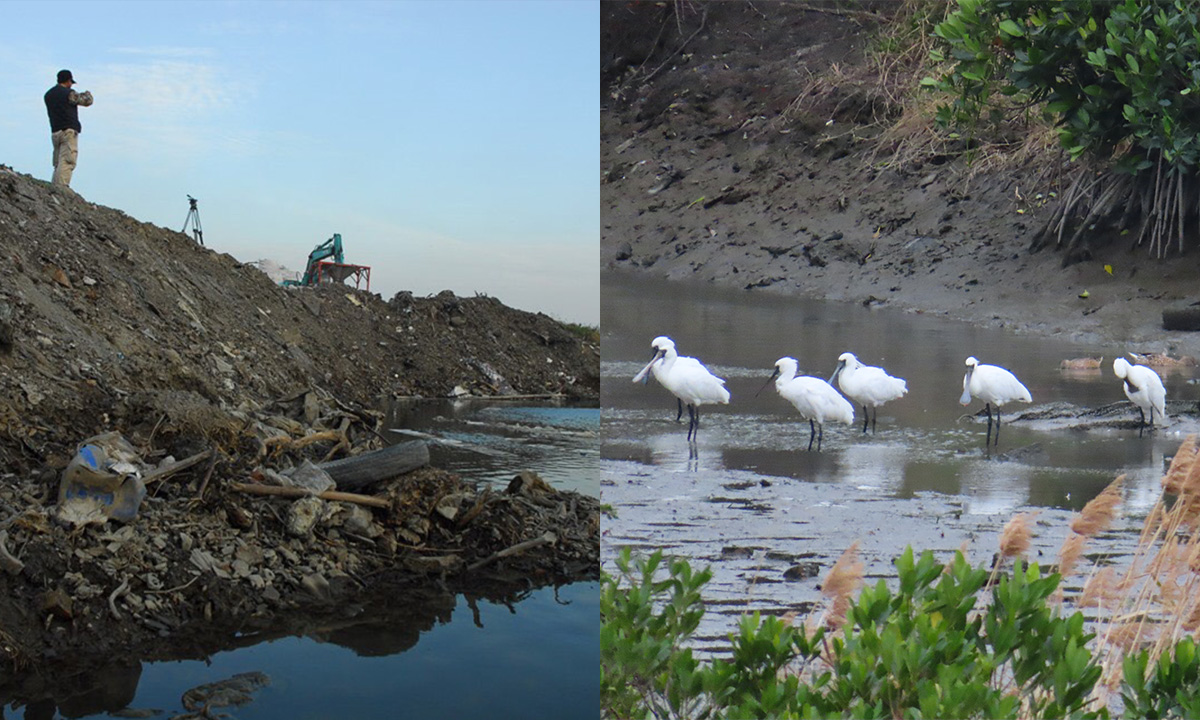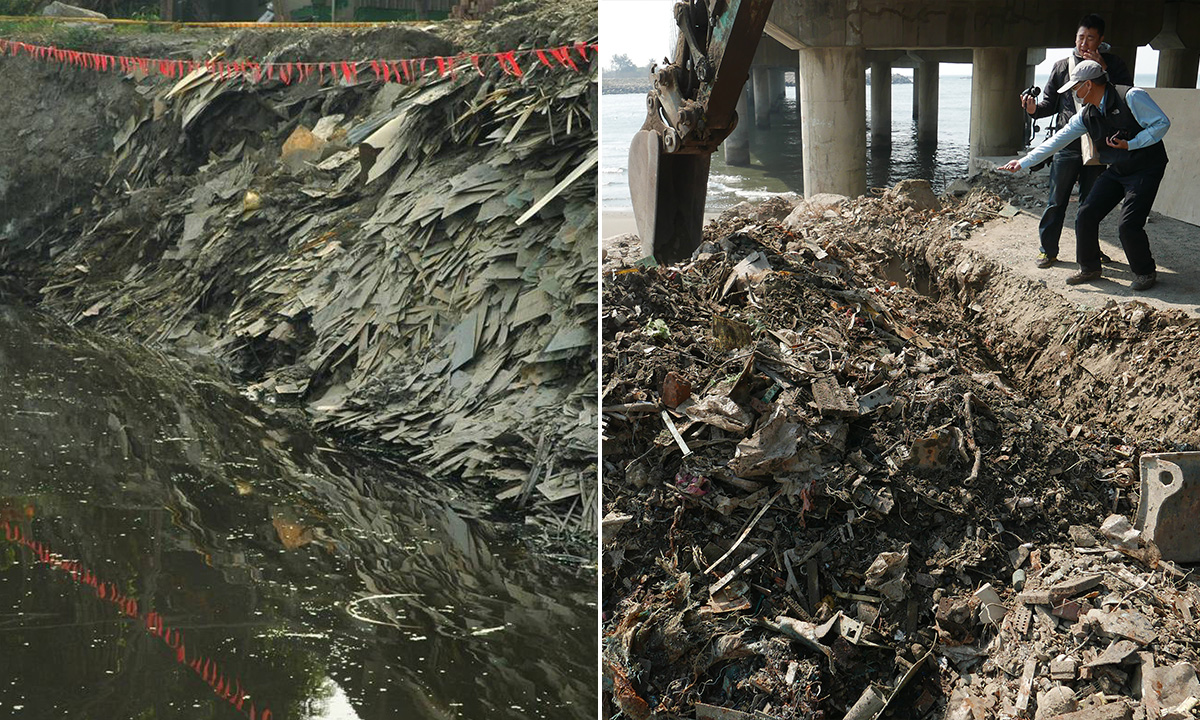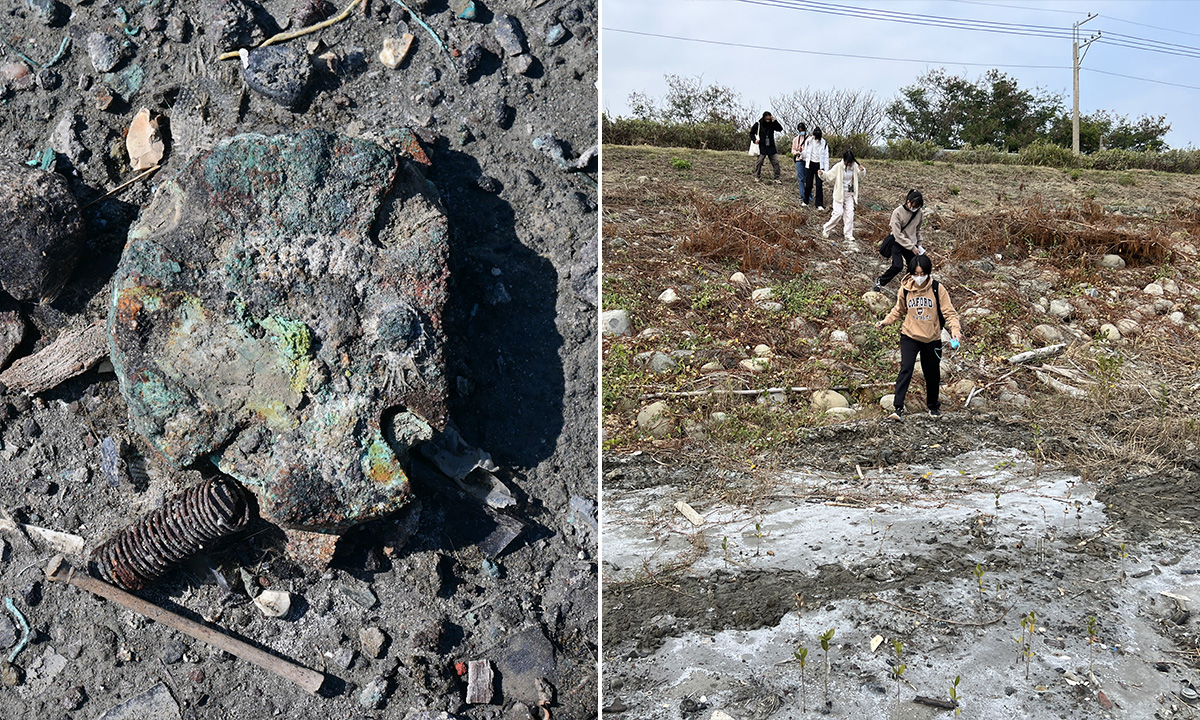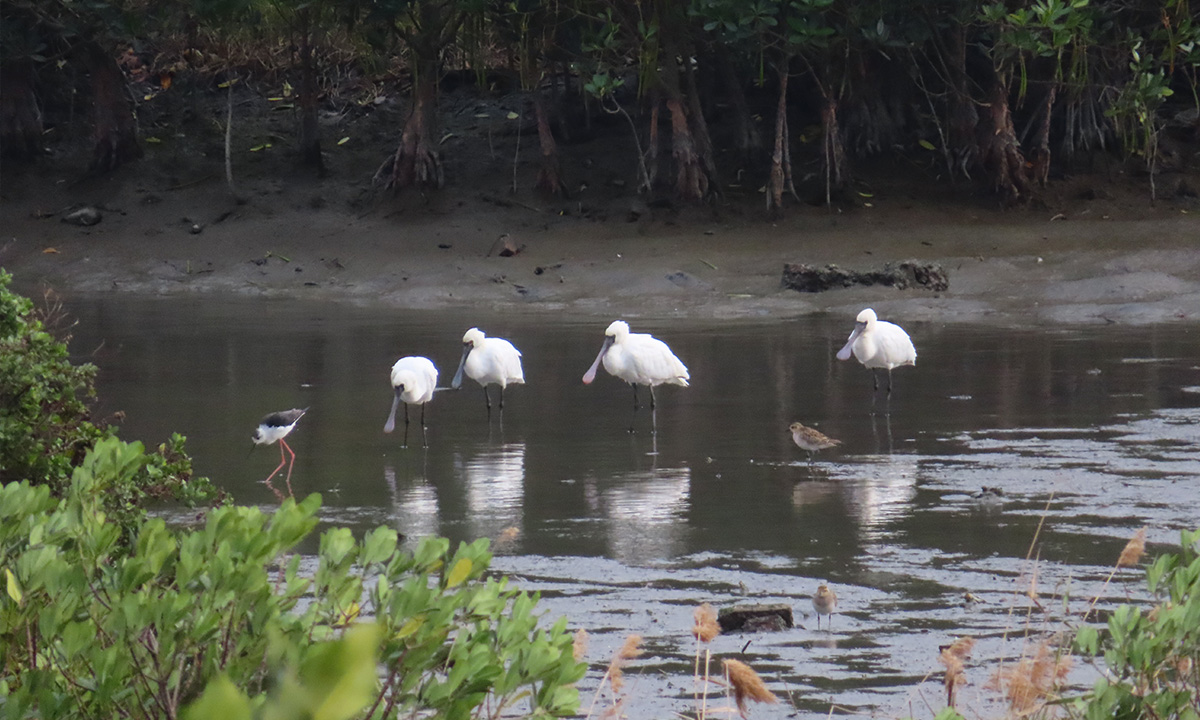
By Chao Jui-Kuang, Researcher of the Environment Group at Tainan Community University
The rivers I experienced in my youth were always places where I could enjoy the beauty of nature. My connection with the Erren River began in 2000, when Tainan Community University was established. At the time, I wanted to share the joy I had found in other rivers, so I began taking people to the riverside to explore and appreciate them. However, we soon realized that the rivers we were familiar with were all located in other counties, requiring one or two hours of driving. In contrast, although Tainan City had many rivers, none of them felt inviting or accessible. This realization motivated me to begin visiting and exploring several of Tainan’s local streams.
At the time, the Erren River was notorious for its severe pollution. Long before I got involved, dedicated individuals like Teacher Huann-Jang Hwang, Mr. Shui-Long Su, and Village Chief Ming-Hui Tu had already fought for its restoration for years. The river reeked of foul odors, its water perpetually black—sometimes turning orange—with occasional oil slicks on the surface. Small boats left trails of thick foam in their wake. The ecosystem was virtually dead: carcasses of pigs, chickens, and ducks were common—and there was even a dead cow once. Dead fish often floated near the river mouth. Mountains of garbage and industrial waste lined the banks: circuit boards, ceramic shards, plastic, fiberglass, and layers of decayed, oxidized sludge. Even the water seeping from the waste piles was black.

Left: Exposed industrial waste along the banks of the Erren River in earlier years. Right: In 2015, Tainan Community University, in collaboration with government agencies, conducted an official site inspection and excavation of electronic waste at the Erren River.
Having experienced the beauty of unspoiled rivers, I was deeply angered by the appalling condition of the Erren River. I turned to the tool I knew best—photography—to document its true state. At the same time, I organized courses at the community university, inviting experts to share their knowledge of river ecosystems, pollution remediation, and water quality testing. We also explored how ordinary citizens could help protect and restore the river.
During this period, we formed a river guard volunteer team to monitor the Erren River through photography and documentation. Whenever we identified a problem, we reported it immediately—hoping to raise public awareness of the river’s plight and prompt action from the Environmental Protection Bureau. Due to the high volume of cases, the Tainan District Prosecutors Office established Taiwan’s first Environmental Alliance in 2007, uniting civil groups, the Environmental Protection Bureau, law enforcement, and other government agencies to combat environmental crimes. As a result, frequent illegal discharges gradually declined. By 2012, following a major incident, there were no more serious cases of illegal wastewater dumping, and the problem was gradually brought under control.

Left: Waste washed out from the Erren River (photographed on 2024/12/17). Right: Tainan Community University leads students on a field investigation into waste issues along the Erren River.
However, the challenges were far from over—chief among them the vast amounts of electronic waste that had accumulated along the riverbanks over the years. After prolonged weathering, burning, and melting, the residues, sludge, and oxidized powders had become deeply embedded in the environment. At first, most people believed restoration was impossible and reacted with indifference. But as water quality gradually improved, major pollution cases and illegal burning incidents were increasingly reported and addressed. Following Typhoon Morakot, a “levee engineering project” was proposed. Thanks to the persistent efforts of civil groups, intervention by prosecutors, and support from central government legislators, six kilometers of severely polluted areas were eventually cleared. The Erren River began to recover, and the environment steadily improved. The return of mudskippers, crabs, and waterbirds to the Baishalun Wetland brought renewed hope.
However, as rain and river flow gradually exposed four previously overlooked polluted sites missed during the original six-kilometer cleanup, we continued urging public agencies to address them—through on-site visits and formal meetings. Yet after all these years, the pollution remained. Cleanup costs kept rising, with the Sixth River Management Branch continuing its investigations, detailed surveys, and pilot projects. Finally, earlier this year, the Ministry of Environment allocated funding and committed to a phased, three-year cleanup of the contaminated sites.
We continued documenting environmental changes along the Erren River. Over the years, good news increased while bad news declined. The water was no longer pitch black; fish returned to the river, and bird numbers grew. Two years ago, we spotted the first Black-faced Spoonbill in the waters adjacent to a previously documented electronic waste site. Last year, there were three, and during this Lunar New Year, we photographed nine. We also observed Northern Shovelers, Eurasian Wigeons, Northern Pintails, Common Coots, Common Moorhens, several species of egrets—Great, Intermediate, and Little—as well as Black-winged Stilts, Pied Avocets, and Black-winged Kites. These were truly heartening discoveries.

Environmental improvements along the Erren River have attracted waterbirds such as Black-faced Spoonbills and Black-winged Stilts to settle here. (Photographed on 2025/02/03)
Today, the Erren River—from its estuary to the area beneath the Erren River Bridge—offered opportunities to explore topics such as coastal erosion, beach litter, and coastal vegetation. Along the riverside bike path toward Nanding Bridge, visitors could access a mangrove trail and the nearby Baishalun Wetland. Heading east, one passed areas that had once been major electronic waste pollution sites, located beside a wetland reclaimed from former fishponds by the Sixth River Management Branch. Many birds stopped here to rest and feed, and with some luck, one might have spotted a Black-faced Spoonbill during February or March. Farther along stood the Golden Carp Bridge, where the Sanyeh River flowed into the Erren River. Once dark and polluted, the water was now clear enough to see fish swimming beneath the bridge. Although occasional litter remained, the river had improved significantly from its formerly lifeless state.
The story of the Erren River reminded us that as long as we were willing to try, there was hope for changing our environment. Over the past 25 years, we had witnessed the river’s transformation—and, along with it, the improvement of our living environment. That’s why I now invite you to come and experience the power of this change for yourself. Have faith, take action, and together we can make a difference.
About the Columnist CHAO JUI-KUANG
Current Position: Lecturer in the Nature and Environment Program at Tainan Community University; Researcher of Environment Group
Areas of expertise include photography, painting, theatrical lighting, and the documentation, research, and promotion of the natural environment.




 中
中